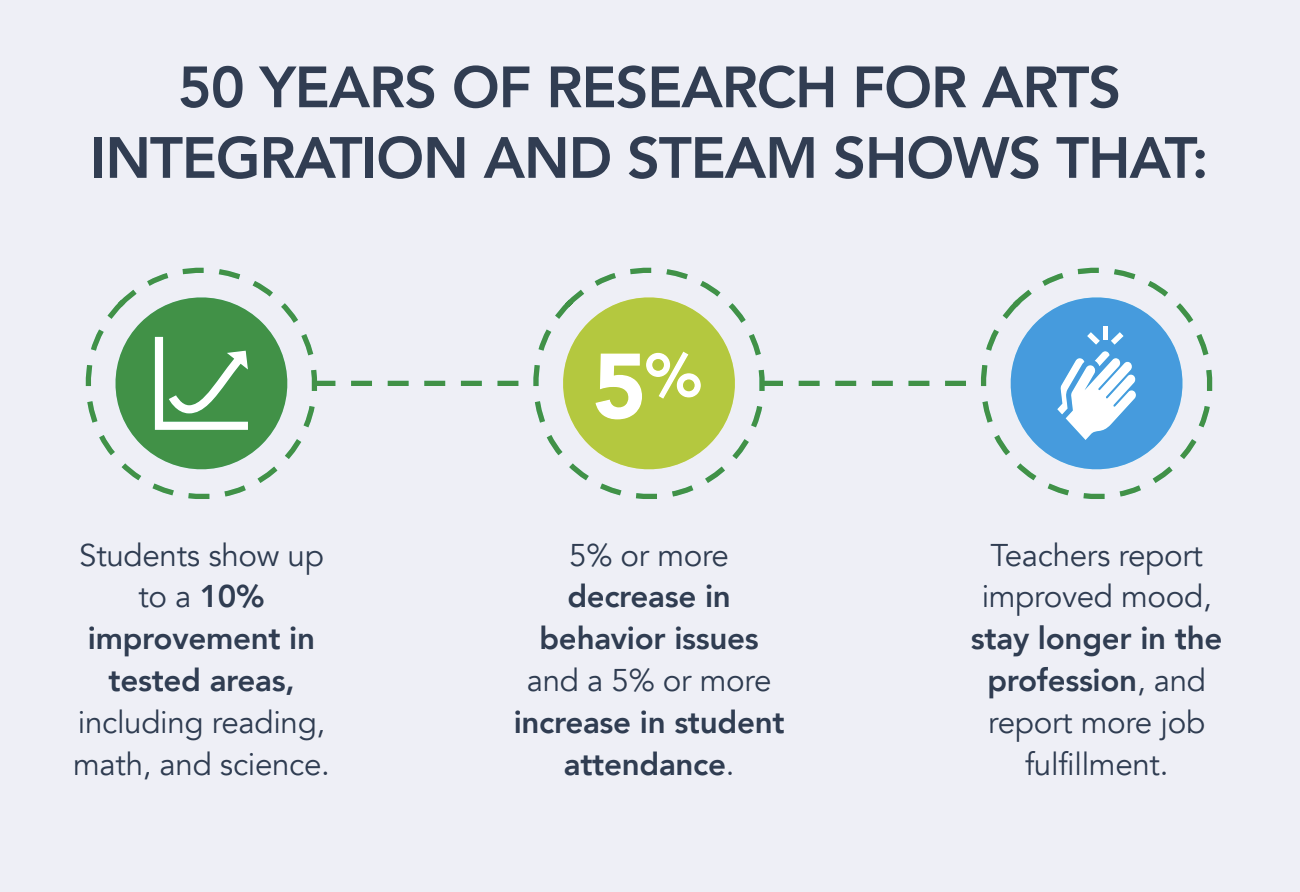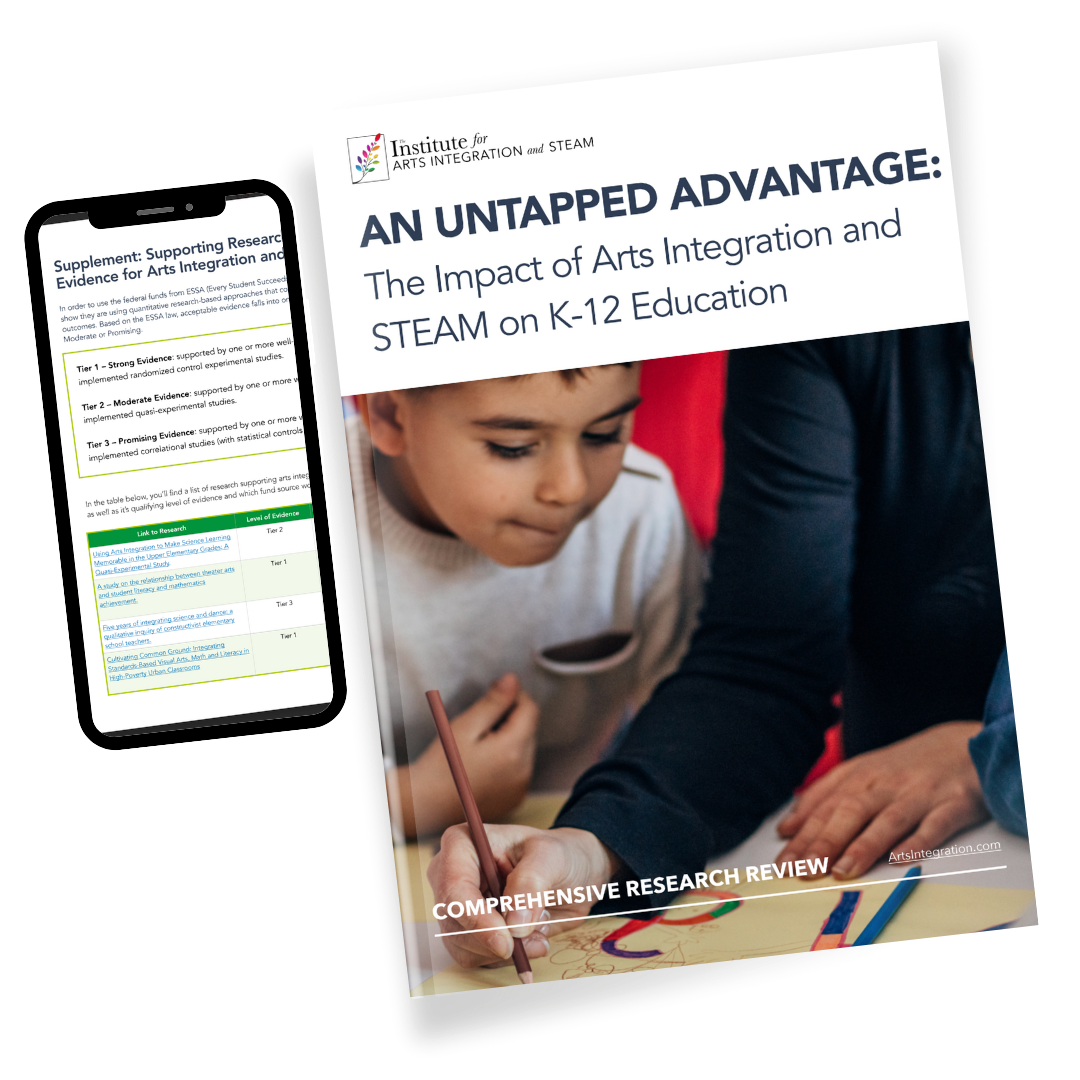An Evidence-Based Approach
Both Arts Integration and STEAM have been shown to positively impact student achievement, social-emotional learning, student attendance, and teacher retention. This report shares the research behind these approaches and why they provide a critical advantage for 21st century classrooms.


Qualifying Research and Tiers of Evidence
Arts Integration and STEAM offer connective pathways toward reaching and teaching every child and empower educators in their professional growth. In order to secure funding to support these approaches, you must share qualifying research and tiers of evidence. This guide identifies:
- Specific research that supports Tiers 1-3 of evidence
- Evidence that supports how arts integration and STEAM create equity and build cultural and community awareness
- Relevant data that showcases how the arts are powering the economy, adding over $900 billion to the annual GDP
- How arts integration and STEAM are developing college and career readiness and
- Best practices for implementation supported by specific research studies
Review the Research and Unlock the Power of Creativity.
The future of education is changing – and this research shows how we can best prepare of our students for it.
Questions? Contact Us Here Anytime.
